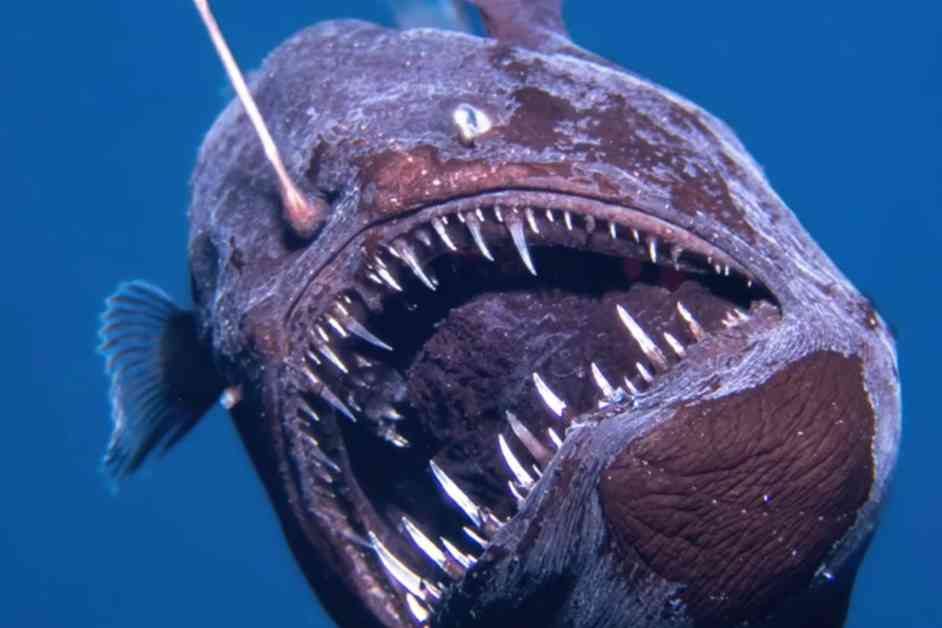Rare Anglerfish Surfaces at Unprecedented Heights
In a groundbreaking discovery on January 26, 2025, a team of researchers off the Canary Islands encountered a black seadevil anglerfish, a species typically found at extreme depths, swimming near the surface. This remarkable event marks only the second time this elusive creature has been observed alive, leaving scientists astonished by the unprecedented sighting.
The black seadevil, scientifically known as Melanocetus johnsonii, is a rarely seen marine creature often dubbed a ‘black sea monster’ due to its menacing appearance, complete with sharp fangs and a bioluminescent lure that captivates the imagination. Despite its terrifying exterior, experts emphasize that the fish is, in fact, ‘mostly soft and squishy.’
Rare Photograph Captured by Marine Wildlife Photographer
David Jara Bogunyà, a marine wildlife photographer, was onboard the research vessel Glaucus when the black seadevil made its appearance. Recalling the moment, Jara expressed, ‘It was like a dream come true. When I was a child, I had a book with deep-sea creature illustrations. These animals looked so wild, they didn’t seem real.’ For over an hour, Jara and his team swam alongside the anglerfish, capturing a once-in-a-lifetime sighting of a species typically inhabiting the dark ocean depths between 650 and 6,500 feet.
The footage obtained showcases the unique features of the fish, including its glowing lure, large teeth, and wide mouth, adding to the excitement of the encounter. Kory Evans, a fish biologist at Rice University, admitted, ‘When I first saw the video, I honestly didn’t believe what I was seeing. I thought it was AI.’ This sentiment was echoed throughout the scientific community, given the rarity of such close encounters with deep-sea creatures.
The only prior recording of a living black seadevil occurred in 2014, when marine scientists utilized a remotely operated vehicle to film the species at a depth of around 1,900 feet in Monterey Bay. Therefore, this new sighting in the Canary Islands holds immense scientific value.
Why Did the Black Seadevil Swim to the Surface?
The behavior of the black seadevil has sparked numerous inquiries among researchers. Typically, these anglerfish are ambush predators that remain stationary in the deep sea, awaiting unsuspecting prey. Observing this species swim actively near the surface was particularly unexpected.
Evans, an expert in deep-sea creatures, explained that the black seadevil’s behavior defied conventional understanding. ‘Their whole strategy is not to move. They are ambush predators, just sitting there. So, seeing one swimming actively is quite shocking.’ Several theories have emerged to explain why the fish ventured far from its usual habitat, including scenarios where it consumed a fish with a swim bladder or was affected by warm water columns from underwater volcanic activity.
The Canary Islands’ undersea fissures and potential interactions with larger predators, such as pilot whales or jellyfish, may have influenced the black seadevil’s unusual journey to the surface. While the fish unfortunately perished shortly after being sighted, the event provided valuable insights into this mysterious species.
New Insights into the Deep Sea
Bruce Robison, a senior scientist at the Monterey Bay Aquarium Research Institute who recorded the first living black seadevil in 2014, highlighted the significance of observing these creatures in their natural habitat. ‘These animals have been known for a long time, but we’ve mostly dealt with dead specimens,’ Robison explained. ‘What we’ve learned from past specimens is that they create their own light through a symbiotic relationship with bioluminescent bacteria.’
Anglerfish are renowned for their unique reproductive methods, with smaller males fusing with females to provide genetic material. While it remains uncertain if the black seadevil follows the same reproductive process, this peculiar behavior has captivated scientists for years.
Despite the mystery surrounding the black seadevil’s ascent to the surface, this encounter contributes significantly to our comprehension of the deep-sea ecosystem. Robison emphasized, ‘The deep ocean is the largest habitat on Earth, and it’s home to most of the creatures living on this planet. We know so little about what’s down there.’
This rare footage serves as a poignant reminder of the vast, uncharted world beneath the ocean’s surface. Each new discovery brings us closer to unraveling the enigmatic mysteries of the deep sea, offering a glimpse into a remarkable realm that is both awe-inspiring and elusive.













